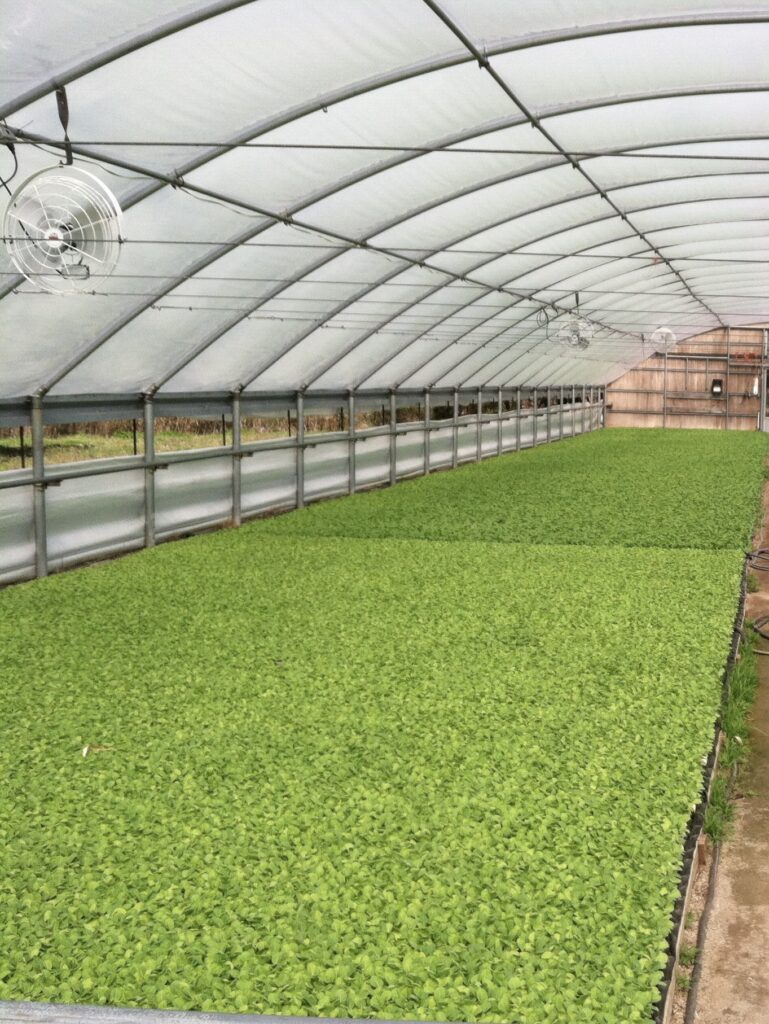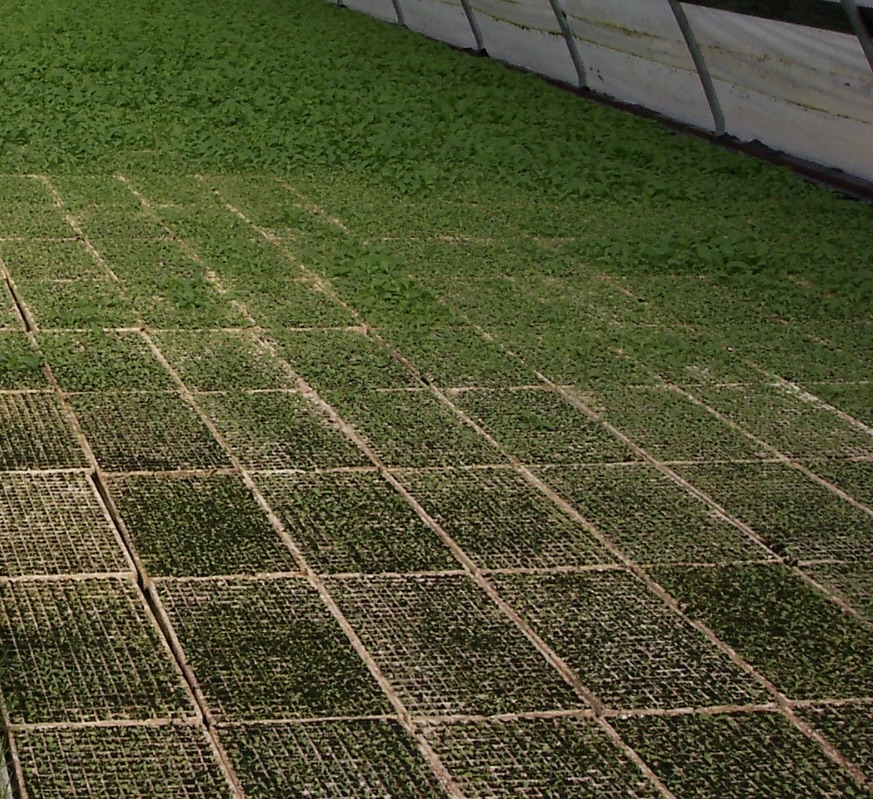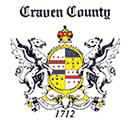When Soilless Media Yields Poor Results
go.ncsu.edu/readext?911339
en Español / em Português
El inglés es el idioma de control de esta página. En la medida en que haya algún conflicto entre la traducción al inglés y la traducción, el inglés prevalece.
Al hacer clic en el enlace de traducción se activa un servicio de traducción gratuito para convertir la página al español. Al igual que con cualquier traducción por Internet, la conversión no es sensible al contexto y puede que no traduzca el texto en su significado original. NC State Extension no garantiza la exactitud del texto traducido. Por favor, tenga en cuenta que algunas aplicaciones y/o servicios pueden no funcionar como se espera cuando se traducen.
Português
Inglês é o idioma de controle desta página. Na medida que haja algum conflito entre o texto original em Inglês e a tradução, o Inglês prevalece.
Ao clicar no link de tradução, um serviço gratuito de tradução será ativado para converter a página para o Português. Como em qualquer tradução pela internet, a conversão não é sensivel ao contexto e pode não ocorrer a tradução para o significado orginal. O serviço de Extensão da Carolina do Norte (NC State Extension) não garante a exatidão do texto traduzido. Por favor, observe que algumas funções ou serviços podem não funcionar como esperado após a tradução.
English
English is the controlling language of this page. To the extent there is any conflict between the English text and the translation, English controls.
Clicking on the translation link activates a free translation service to convert the page to Spanish. As with any Internet translation, the conversion is not context-sensitive and may not translate the text to its original meaning. NC State Extension does not guarantee the accuracy of the translated text. Please note that some applications and/or services may not function as expected when translated.
Collapse ▲Typical production of vegetables or tobacco involves using floating trays created with small cells sized appropriately for the crop and seeding directly into these cells using a soilless media. When these trays are floated on a nutrient bed, producing healthy transplants is relatively easy and inexpensive means to grow a uniform supply of plants. The system uses a soilless media to hold the seed and emerging seedling until roots grow into the nutrient solution. The media is lightweight, holds water yet also drains well, may have a limited amount of nutrients added, and is generally free of weeds and diseases.
The media is typically created for the needs of a specific plant by altering contents slightly. The media is comprised of ingredients such as sphagnum peat moss, perlite, vermiculite, composted bark, compost, and coconut coir. Regrettably, small changes in this soilless media can greatly impact transplant growth. As example, most include nutrients in small amounts for the emerging seedling. However, plants differ in nutrient needs and ability to withstand the associated salt increase from the added fertilizer. As such, some seedlings may fail to germinate or may grow very slowly.
Even though these added nutrients are essential, they may also create problems based upon management. Consider the image left. Plants on the upper bed with the darker green color is a so illess media developed specifically for tobacco production with low nutrients added. Plants on the bottom with the lighter green to pale yellow appearance are from a competitor brand promoted as having added nutrients for faster growth. The competitor brand actually resulted in poor growth because the competitor brand’s added nutrients created excessively high salt content resulting in poor growth. Simply put, all plant, whether in a greenhouse or field, cannot tolerate excessive fertilization because this creates excessive salt damage to the roots. To avoid this scenario, make sure to know the nutrient content of the media by having it tested. Within North Carolina, this is possible for a small fee through the NCDA & CS Agronomic Solution Lab .
illess media developed specifically for tobacco production with low nutrients added. Plants on the bottom with the lighter green to pale yellow appearance are from a competitor brand promoted as having added nutrients for faster growth. The competitor brand actually resulted in poor growth because the competitor brand’s added nutrients created excessively high salt content resulting in poor growth. Simply put, all plant, whether in a greenhouse or field, cannot tolerate excessive fertilization because this creates excessive salt damage to the roots. To avoid this scenario, make sure to know the nutrient content of the media by having it tested. Within North Carolina, this is possible for a small fee through the NCDA & CS Agronomic Solution Lab .
Often manufacturers may alter blends slightly when one ingredient is unavailable or increases rapidly in price. This is not always suitable for all plants. As example perlite is very lightweight, porous and absorbent. It holds three to four times it weight in water yet provides oxygen for plants. Thus, it is common in many soilless blends. However during Covid restrictions, cost or unavailability of perlite resulted in some manufacturers substituting vermiculite for the perlite. Vermiculite increases water holding capacity of the media promoting greater disease and algal bloom. Vermiculite also has a greater nutrient holding capacity. The net result is that this slight change resulted in greater disease for tobacco production and a greater fertilization rate.
One other reason soilless media may fail is simply due to time of storage. Most media includes some rate of lime to adjust the media pH to a range appropriate for the plant to be grown. When used in a timely manner, all is well. However, if stored for too long, (3-9 months depending upon the ratio of components and amount of lime added), the lime will react and the media pH will drop. As such, plant root development will be slower or less numerous. Nutrient uptake may also be limited. Thus, soilless media is best when used immediately. Attempts to save media from year to year results in cells that will not wick moisture or, at best, have plants that grow slowly with very uneven growth.
Handling may also impact media performance. The composition of soilless media includes sphagnum and added nutrients. If excessively moist and warm, decomposition will begin to occur. Thus, if bags have been in a shelter yet feel warm to the touch, one should assume that degradation of contents is occurring. During this decomposition process nitrate and ammonium is created. Not only is this a loss of the nutrient nitrogen, these gaseous forms may be harmful to germinating seedlings.
Lastly, one should also consider that poor plant growth may not be due to poor media. In the image below, poor and uneven growth is easily noted. However, in this case  , only one media is used. The problem in this case is not the media, rather the quality of the water used for the floatbed. Excessively high carbonates, bi-carbonates, improper solution pH, and salts can greatly impact early seedling growth. In this particular situation, high carbonate and bi-carbonate levels resulted in uneven growth. To correct for this situation the water should be tested prior seeding and corrective measures taken. In this example, additions of a few ounces of acid per 100 gallons of water would have eliminated this problem. (Corrective measures are specific to the water quality problem. Additions of acid or surfactants should be based on test results).
, only one media is used. The problem in this case is not the media, rather the quality of the water used for the floatbed. Excessively high carbonates, bi-carbonates, improper solution pH, and salts can greatly impact early seedling growth. In this particular situation, high carbonate and bi-carbonate levels resulted in uneven growth. To correct for this situation the water should be tested prior seeding and corrective measures taken. In this example, additions of a few ounces of acid per 100 gallons of water would have eliminated this problem. (Corrective measures are specific to the water quality problem. Additions of acid or surfactants should be based on test results).
Since we cannot manage the soilless media content nor always know fully how it has been handled, one should protect themselves by taking a few simple steps as noted below.
- Record the lot number of every bag.
- Submit samples of the media from each differing lot obtained to the NCDA & CS Agronomic Division.
- Note the color of perlite or vermiculite. If changes are noted during the seeding process, note which bags differ. Manufacturers often use differing colors to designate year of production or differing nutrient content.
- Add fertilizer to the float bed according to recommendation of the land-grant University nearest your production. Adjust this only when confirmed data shows the need to do so based on changes in media.
In addition to testing media, sample the water quality. The N.C. Cooperative Extension can provide assistance interpreting water or media test results if needed. Find your local NC Extension Agent through the NC State Extension portal.
Additional information may also be found at the NC State Tobacco Web Portal or the NC State Vegetable Web Portal.




